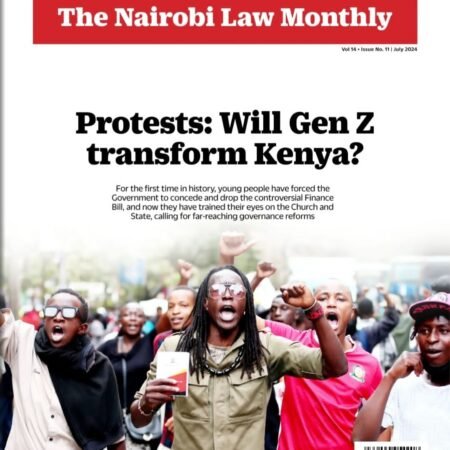By Ana Revenga and Meagan Dooley
Around the world, the lives of women and girls have improved dramatically over the past 50 years. Life expectancy has increased, fertility rates have fallen, two-thirds of countries have reached gender parity in primary education, and women now make up over half of all university graduates. Yet despite this progress, some elements of gender inequality remain incredibly sticky, resistant to change. Access to economic opportunities is one such domain.
-
Sale!
Download Nairobi Law Monthly Magazine July 2024 Edition
Downloads Original price was: KShs200.00.KShs100.00Current price is: KShs100.00.
Women opt out of the labour force in many countries due to structural barriers, social norms, and child rearing responsibilities. When women do work, they often choose flexible, part-time jobs to accommodate their unpaid care burden. These positions are typically lower skilled and lower paid. When women work in formal, paid employment, they earn less than male counterparts, even controlling for age, education level, and sector. Female farmers and entrepreneurs tend to be less productive than males due to limited access to land, capital, knowledge, and technology. These gaps in economic opportunities persist across all countries and income levels.
Understanding the unique barriers women face in accessing economic opportunities, and how these gendered barriers interact with larger structural forces, can help strengthen rigorous, evidence-based approaches to poverty reduction and growth promotion. The gender gap in poverty is widest during women’s reproductive years, when there are 122 women for every 100 men living in poor households. Children account for 44 percent of the poor, with girls overrepresented among this group. Efforts to promote women’s economic participation during these years can thus raise the income levels of the poor, leading to tangible impacts on household consumption as well as child health and well-being. Women’s economic empowerment also matters for growth.
At the extreme, when women are not permitted to work, a country misses out on half of its productive labour force. But even when barriers are not this severe, women’s reduced labour force participation matters. When women self-select out of the workforce due to care work, social norms, or discrimination, firms lose out on a pool of skilled workers, and instead hire less-skilled men to take their place. This shift results in real losses in productivity. Beyond the impact on immediate growth, women’s economic empowerment matters for future growth. When women bring in additional income, they invest in their children’s health, education, and nutrition, raising the human capital of the next generation.
While most development organizations and increasingly most governments tout the importance of women’s economic empowerment, they often struggle to integrate gender analysis into their diagnostics and prioritization processes. There are several reasons for this challenge. First, due to the systematic and entrenched nature of gendered barriers, it is often difficult to identify the root cause of gender inequalities and even more difficult to estimate the aggregate economic returns that would come from addressing them.
Second, the full returns to removing gendered barriers typically materialize over the long term, while short-term effects may be more modest. In a world characterized by short-term development budgeting and planning horizons, this usually works against action toward gender equality. Third, within the world of economic development policymaking, those advocating for gender equality and those focusing on economic growth often do not collaborate effectively and tend to move on parallel tracks. Finally, many practitioners mistakenly believe that integrating gender into development strategies equals a focus on women, instead of recognizing that a systematic gender approach is about bringing a gender lens to the analysis of any development issue.

